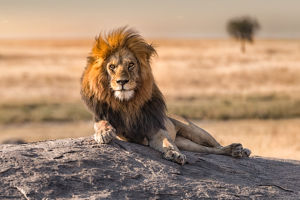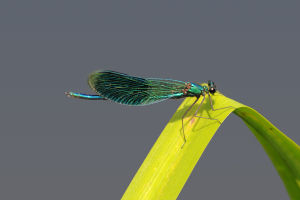Imagine running at 110 kilometers per hour—not in a car, but on your own two legs. Sounds impossible, right? For us, maybe. But for the cheetah, it's just another day on the African plains.
In just 3 seconds, this wild cat can go from standing still to blazing fast. But how is that even possible? Let's take a closer look at what makes the cheetah nature's ultimate speed machine.
A body built for speed
The cheetah's entire body is designed for explosive movement. It's not just fast—it's made to be fast. Their slim and lightweight body reduces drag while running. Their long legs give them an extended stride—meaning they can cover more ground with each step. On average, one stride of a cheetah at top speed can reach 7 to 8 meters!
Muscles that work like springs
What powers all that speed? It's the cheetah's incredibly flexible spine and powerful muscles. When they run, their spine stretches and contracts like a spring, allowing the front and back legs to come close together under the body—and then stretch way out in front and behind. This motion lets them take quick, powerful strides in a smooth and steady rhythm. It's like watching a perfectly timed machine in motion.
Light bones and tight design
Cheetahs have a lightweight skeletal structure, which helps them move quickly without wasting energy. Their heads are small and aerodynamic, which helps reduce air resistance. Even their tail plays a key role—acting like a natural rudder that helps them balance and steer at high speeds. That's how they can make sharp turns even when chasing prey at full speed.
Special claws for extra grip
Unlike most cats, cheetahs can't fully retract their claws. This may sound like a disadvantage, but it's actually a smart design. Their semi-retractable claws give them better grip on the ground—like the spikes on running shoes. These claws help them dig into the ground and push off with power, especially when turning or accelerating quickly.
Supercharged breathing system
Speed like this takes serious oxygen. When cheetahs run, their breathing rate can go up to 150 breaths per minute. Their large lungs, heart, and nasal passages make sure that oxygen flows fast through their body. This keeps their muscles energized for the short but intense sprint. However, this speed comes at a price—they can only maintain top speed for about 20 to 30 seconds before needing to rest.
Eyes on the prize
Chasing fast-moving prey requires more than just speed—it also needs excellent vision. Cheetahs have sharp eyesight, especially during the day. They can lock onto a moving target from hundreds of meters away and stay focused even while moving rapidly. This laser-like vision helps them track and adjust during a chase, making sure they don't waste their energy.
Why only short bursts?
Even though cheetahs are the fastest land animals, they can't run at full speed for long. The effort creates a lot of body heat, and they risk overheating if they don't stop in time. That's why their hunting strategy is all about short, intense sprints—chase hard, catch quickly, and rest soon after.
The perfect short-distance runner
Everything about the cheetah—from bones and muscles to breathing and balance—is made for short, explosive power. It's not about running all day, but about being the best sprinter when it really matters. In the wild, that often means the difference between catching a meal and going hungry.
Would you race a cheetah?
Of course, none of us can outrun a cheetah, but now we know why! Isn't it fascinating how perfectly nature designed this animal for one thing—speed? Have you ever seen a cheetah run in real life or on video? What amazed you the most?
We'd love to hear your thoughts! Nature's designs are full of surprises—and the cheetah is definitely one of its most thrilling creations.


